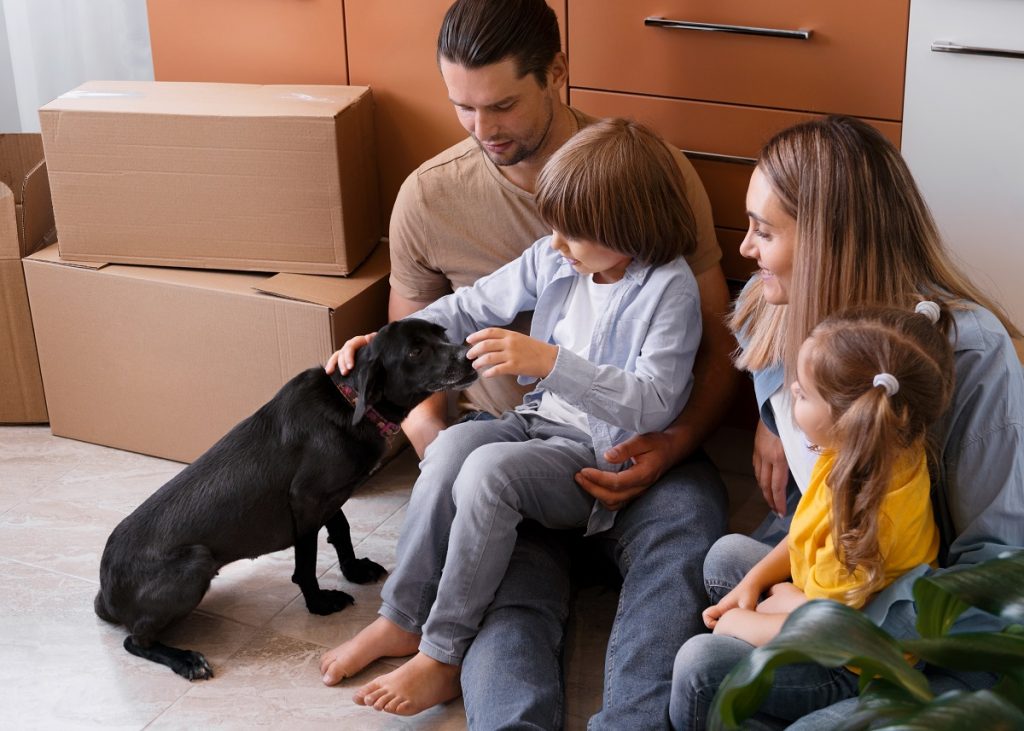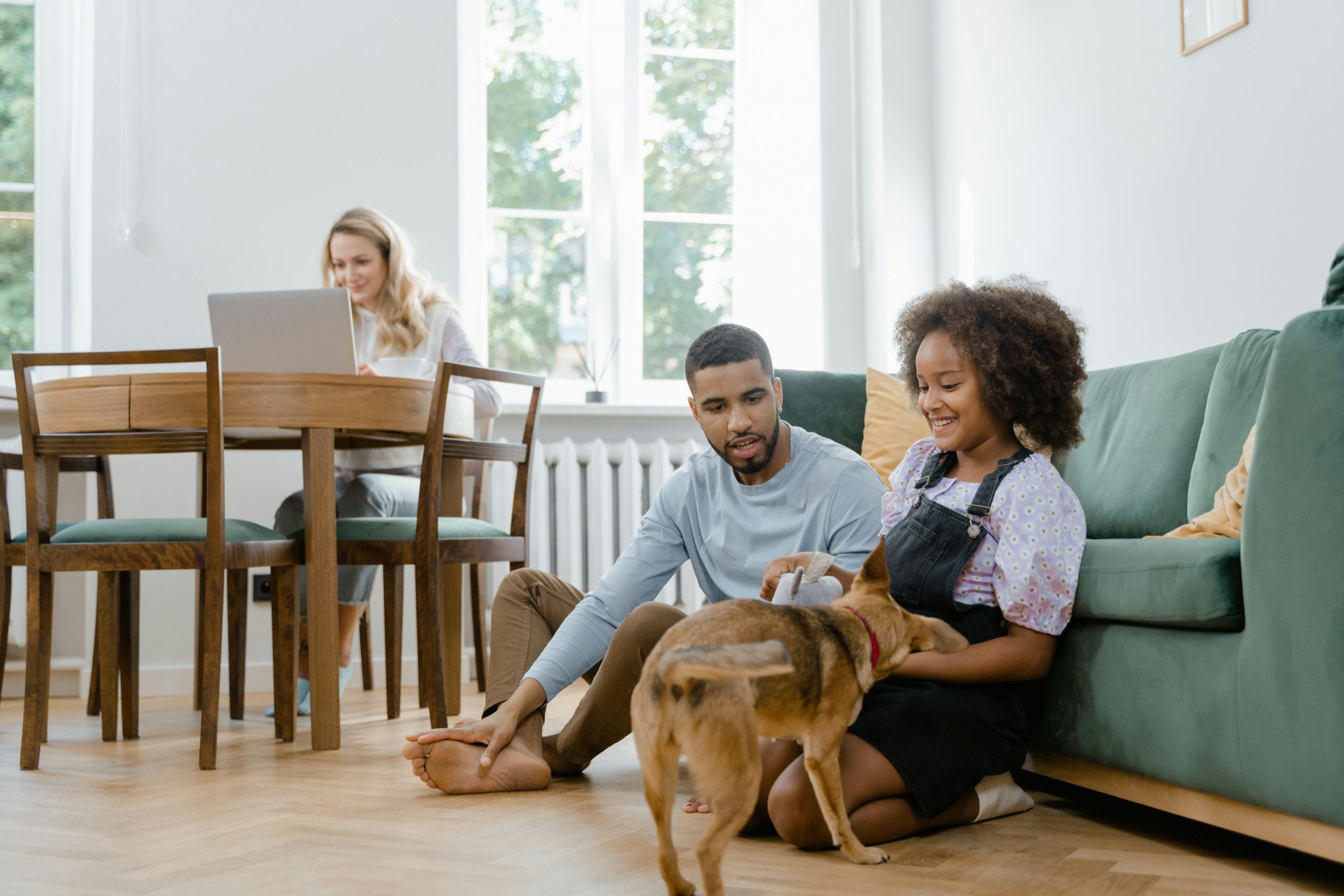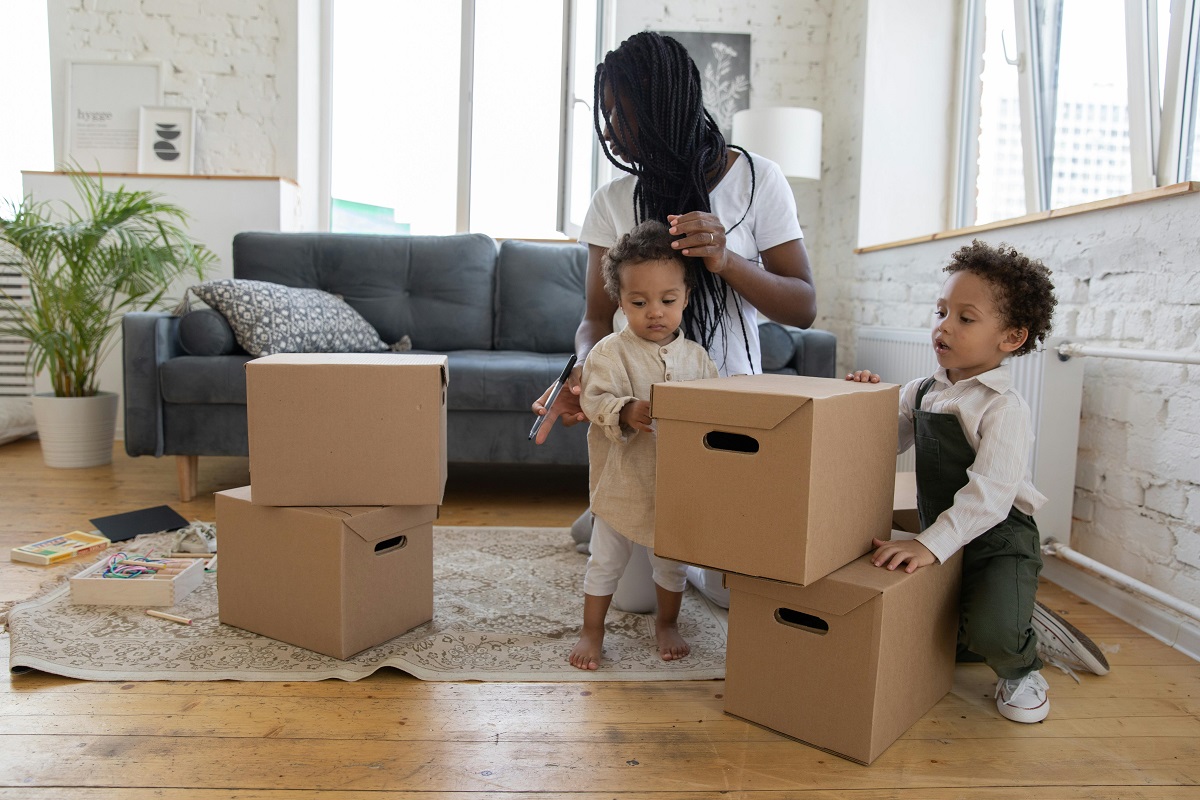Moving cross country is a huge deal. Now throw in a couple of toddlers and a nervous dog or cat, and suddenly it’s less of an adventure and more of a logistical juggling act. Whether you’re relocating for a new job, to be closer to family, or just for a change of scenery, there’s no denying that a long-distance move with little ones and furry companions takes extra planning—and a whole lot of patience.
But here’s the good news: it can be done, and it doesn’t have to be chaotic. With the right mindset, tools, and preparation, you can pull off a smooth cross-country move and keep your cool along the way.
Why Is Moving Cross Country So Hard with Kids and Pets?
Let’s face it—kids thrive on routine. Pets do, too. A cross-country move disrupts everything they’re used to: environment, schedules, sleeping arrangements, and familiar faces. That shift can trigger behavior issues, meltdowns, or even physical stress like stomach upsets (for pets and humans).
But knowing the challenges is the first step to managing them. Once you identify what could go wrong, you can proactively build a plan that keeps everyone calm and cared for.
Start Planning Early (Really Early)
If you’re thinking of packing boxes a week before the move, think again. A cross-country move with a family demands at least 6–8 weeks of planning.
Here’s what to focus on first:
- Create a moving binder or digital folder. Keep checklists, moving quotes, pet records, school forms, and schedules all in one place.
- Book your moving services ASAP. Movers, truck rentals, pet transport—these get booked quickly, especially in peak season.
- Schedule vet appointments and school notifications. Your kids’ school will need transfer paperwork, and your pet might need updated vaccines or sedation plans.
- Start sorting and decluttering. The less you bring, the less you’ll stress.
What’s the Best Way to Travel: Drive or Fly?
When moving cross country with kids and pets, the choice between flying and driving isn’t just about convenience—it’s about what your family can realistically handle. Each option comes with trade-offs, and the best choice depends on your timeline, budget, flexibility, and how well your kids and pets tolerate travel.
Flying: Pros and Cons
Pros:
- Faster travel time. Flying gets you to your destination in hours instead of days, which can be appealing if you’re on a tight schedule or starting a new job soon.
- Less physical exhaustion for parents. With shorter travel time, there’s less need to manage restless kids or drive long distances day after day.
- Often easier with babies or toddlers. Little ones who nap easily on planes may handle short flights better than long road trips.
Cons:
- Stressful for pets—especially larger ones. Most airlines only allow small pets in the cabin. Larger pets must fly as cargo, which can be risky and anxiety-inducing.
- Higher costs. Airfare for a family plus pet travel fees (which can include vet certifications, crates, and carrier charges) can add up quickly.
- Limited packing flexibility. You’ll need to ship most of your belongings or wait for your moving truck, and there are restrictions on what you can bring aboard.
Flying is best if your family handles flights well, your pets are small enough for cabin travel, and you want to save time—even if it costs more.
Driving: Pros and Cons
Pros:
- More control over your schedule. You can decide when to stop, where to stay, and adjust plans as needed for cranky kids or pets.
- Easier to supervise and comfort your family. You’re with your kids and pets the entire time, which allows you to respond to their needs immediately.
- More budget-friendly. Especially if you own your vehicle or rent a truck, driving can save money on airfare and pet transport services.
Cons:
- Long days in the car are tough. Sitting in a vehicle for hours can wear down even the most patient family members. Boredom and fatigue can trigger tantrums—or whining from pets.
- Extra travel expenses. Fuel, hotel stays, meals, and tolls can add up over the course of the trip.
- Unpredictable delays. Bad weather, traffic jams, or vehicle trouble can stretch your travel time and increase stress.
Driving is ideal if you prefer flexibility, have multiple pets, or want to keep essentials with you. It also helps if your kids travel well in cars.
Pro Tip:
If you drive, plan to stop every 3–4 hours. Let your kids run around and give pets a chance to stretch and relieve themselves. Apps like BringFido or Roadtrippers can help you find pet-friendly rest areas, restaurants, and hotels along the way.
How to Prep Kids for a Big Move
Kids don’t just go along for the ride—they experience the stress of moving just like adults do, sometimes even more intensely. Preparing them emotionally and practically ahead of time can make all the difference. Here are some tips to get your kids on board:
Talk About the Move Early
Give your kids plenty of time to process the change. Explain why you’re moving in age-appropriate terms, and frame it as a new adventure. For younger children, picture books about moving can help. Older kids can be invited into planning discussions, like helping choose new family activities or mapping the route.
Let Them Make Choices
Allow kids to feel a sense of control. Let them choose how to decorate their new room, select a special toy to keep with them during travel, or help plan a stop along the way. These small decisions help them feel involved and heard.
Create a Countdown Calendar
Visual countdowns help reduce anxiety by giving kids a clear timeline. You can include fun milestones like “packing day,” “goodbye party,” or “hotel night” to build excitement and structure.
Pack a “Comfort Kit”
Prepare a bag just for them that stays accessible during travel. Include familiar items like a favorite stuffed animal, snacks, bedtime books, pajamas, and a family photo. This sense of familiarity can be calming, especially in unfamiliar hotels or long car rides.
Stick to Routines as Much as Possible
Even if your surroundings are changing, keeping bedtime, meal times, and nap schedules consistent provides comfort and stability. If routines need to shift, transition gradually rather than all at once.
How to Keep Pets Safe and Calm During the Move
Pets are creatures of habit, and a major move can throw off their sense of security. Taking steps to ease them into the change can prevent anxiety and health issues during the trip.
Visit the Vet
Schedule a pre-move checkup to ensure your pet is healthy and travel-ready. Ask about motion sickness, anxiety treatments, and any recommended vaccinations. If you’re crossing state lines or flying, your vet can also provide a health certificate, which is often required.
Update ID Tags and Microchips
Before moving, double-check that your pet’s ID tags and microchip information are up to date with your new contact details. If your pet gets lost during the journey, this will significantly improve your chances of a quick reunion.
Get Them Used to Travel Gear
If your pet will be in a crate or carrier during the move, start acclimating them to it several weeks in advance. Place treats or toys inside and encourage short trial runs in the car to build comfort.
Pack a Pet Travel Bag
Keep all essentials within reach: food, treats, water, bowls, leash or harness, waste bags, a favorite blanket or bed, and any medications. Calming sprays or chews can also help nervous pets feel more secure.
If Flying, Know the Airline Rules
Research airline pet policies well in advance, especially if you have a larger dog. Many carriers have restrictions on breed, crate size, and weather conditions for animals flying in cargo. You’ll also need an airline-approved carrier and may need to book your pet’s space separately.
What to Pack in the Car or Carry-On (for Sanity)
Whether you’re flying or driving, you’ll need a personal survival kit to handle delays and minimize breakdowns—both literal and emotional.
For Kids:
- Travel games, tablets with headphones, coloring books
- Healthy snacks and drinks
- Extra clothes, diapers/wipes, and first-aid essentials
- A pillow or blanket from home
For Pets:
- Food and water for the day
- Leash/harness and ID tags
- Crate with bedding or familiar items
- A favorite chew toy or calming aid
Have these bags clearly labeled and easily accessible—you don’t want to dig through the moving truck for diapers or kibble.
Staying Overnight? Pick Family-Friendly & Pet-Friendly Hotels
Not every hotel is ready for a traveling circus of children and animals. Do your research beforehand.
Look For:
- Pet-friendly policies with no hidden fees
- Ground-floor rooms for easy potty breaks
- Free breakfast (less hassle in the morning)
- Microwave/fridge for heating up baby food or formula
- Safe surrounding areas with grass or parks nearby
Pro tip: Book ahead and confirm by phone the night before arrival to avoid surprises.
What to Do Upon Arrival (Hint: Don’t Unpack Everything at Once)
Once you get to your new home, don’t rush to unbox every item. Instead, focus on getting your family settled into a familiar rhythm.
Prioritize These Steps:
- Set up sleeping arrangements first. Tired kids and cranky pets are your enemies.
- Introduce pets to one area at a time. Let them get used to smells and boundaries gradually.
- Explore the neighborhood. Walk around with your kids and pets so they feel a sense of place.
- Unpack familiar items quickly. Display toys, pet beds, and framed photos to bring comfort.
Stick to routines (meals, walks, naps) as best as you can for the first week—it will go a long way in calming nerves.
What Not to Do: How to Move Cross Country the Right Way
Even well-prepared families make mistakes on the road. Here are some to watch for:
- Not reserving pet-friendly lodging in advance
- Underestimating how long travel days will feel
- Overpacking and leaving no space in the car
- Forgetting updated vaccination or health records
- Skipping breaks because “we just want to get there”
- Not preparing kids emotionally beforehand
Avoiding these common pitfalls helps keep the trip smoother for everyone involved.
Final Thoughts: Give Yourself Grace
You’re not just moving boxes. You’re relocating lives—tiny, emotional, energetic lives who may not understand what’s happening.
So yes, things will go wrong. You’ll forget a charger. Someone will have a meltdown. The dog might throw up. But that’s okay. Give yourself grace and remember: this is a transition, not an instant fix. In a few weeks, you’ll all settle in and create a new normal.
Just keep the snacks flowing, the routines steady, and your sense of humor intact.




